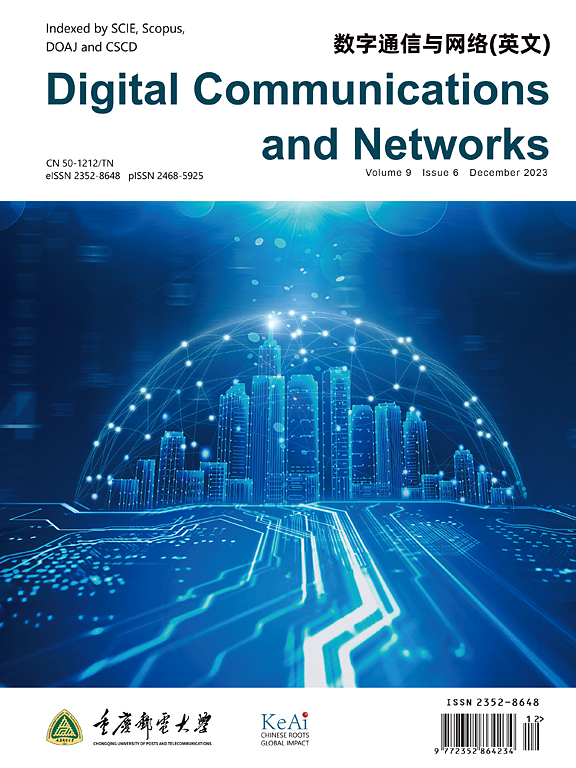Overview of RIS-enabled secure transmission in 6G wireless networks
IF 7.5
2区 计算机科学
Q1 TELECOMMUNICATIONS
引用次数: 0
Abstract
As the 6th-Generation (6G) wireless communication networks evolve, privacy concerns are expected due to the transmission of vast amounts of security-sensitive private information. In this context, a Reconfigurable Intelligent Surface (RIS) emerges as a promising technology capable of enhancing transmission efficiency and strengthening information security. This study demonstrates how RISs can play a crucial role in making 6G networks more secure against eavesdropping attacks. We discuss the fundamentals and standardization aspects of RISs, along with an in-depth analysis of Physical-Layer Security (PLS). Our discussion centers on PLS design using RIS, highlighting aspects including beamforming, resource allocation, artificial noise, and cooperative communications. We also identify the research issues, propose potential solutions, and explore future perspectives. Finally, numerical results are provided to support our discussions and demonstrate the enhanced security enabled by RIS.
6G无线网络中支持ris的安全传输概述
随着第6代(6G)无线通信网络的发展,由于大量安全敏感的私人信息的传输,预计会引起隐私问题。在此背景下,可重构智能表面(RIS)作为一种具有提高传输效率和加强信息安全潜力的技术应运而生。这项研究展示了RISs如何在使6G网络更安全、抵御窃听攻击方面发挥关键作用。我们讨论了RISs的基础和标准化方面,以及对物理层安全性(PLS)的深入分析。我们的讨论集中在使用RIS的PLS设计上,重点介绍了波束形成、资源分配、人工噪声和合作通信等方面。我们还确定研究问题,提出潜在的解决方案,并探索未来的前景。最后,给出了数值结果来支持我们的讨论,并演示了RIS所实现的增强安全性。
本文章由计算机程序翻译,如有差异,请以英文原文为准。
求助全文
约1分钟内获得全文
求助全文
来源期刊

Digital Communications and Networks
Computer Science-Hardware and Architecture
CiteScore
12.80
自引率
5.10%
发文量
915
审稿时长
30 weeks
期刊介绍:
Digital Communications and Networks is a prestigious journal that emphasizes on communication systems and networks. We publish only top-notch original articles and authoritative reviews, which undergo rigorous peer-review. We are proud to announce that all our articles are fully Open Access and can be accessed on ScienceDirect. Our journal is recognized and indexed by eminent databases such as the Science Citation Index Expanded (SCIE) and Scopus.
In addition to regular articles, we may also consider exceptional conference papers that have been significantly expanded. Furthermore, we periodically release special issues that focus on specific aspects of the field.
In conclusion, Digital Communications and Networks is a leading journal that guarantees exceptional quality and accessibility for researchers and scholars in the field of communication systems and networks.
 求助内容:
求助内容: 应助结果提醒方式:
应助结果提醒方式:


